When you think “tropical island archipelago”, you may have images of hordes of holiday-makers baking in the sun. All-inclusive resorts. Overdeveloped beaches and scripted, artificial cultural experiences. The Bijagos are a tropical island archipelago. But they are something else.
The furthest island from the mainland is a mere 100 kilometers, but it might as well be on another planet. On the Bijagos, you will find matriarchal societies, salt-water hippos, miles of untouched beach. There are villages that are only accessible by a two hour walk through the forest.
There are many reasons why the islands remain underdeveloped and somehow paradisiac. Guinea-Bissau itself is underdeveloped, a victim of one of the more oppressive colonial regimes and decades of corruption and poor governance. Environmental factors – the radical tide changes and treacherous pelagic channels – have also done their part to keep the islands isolated throughout history. But the relentlessly independent Bijagos, the ethnic group of the same name, are perhaps the biggest reason you don’t see hotels up and down the island coastlines.
Whatever the reason, the islands are unlikely to remain this way forever.
The Bijagos are a central feature of our two week trips from Dakar to Bissau, and we have been visiting the archipelago since 2017. We hope this guide helps you in your trip planning. If you have recently been to the islands yourself, please let us know about any recent info/changes in the comments below the post.
Can you tell me where to find an 88 island archipelago that has:
— Scoot West Africa (@scootwestafrica) September 21, 2022
✅ priestesses and matriarchal societies
✅ UNESCO biosphere reserve status
✅ cerulean water and world class fishing
✅ a herd of salt water hippos
A thread on the world’s most interesting island chain pic.twitter.com/cSySg9saeW
There are 88 islands in the archipelago, but not all are inhabited and there are some that are more or less inaccessible due to the tides, mangroves and lack of beach. As a traveler, you are most likely to visit one or more of the following six islands.
- Bolama – the closest island to the mainland, Bolama was used by the Portuguese as their administrative capital. It can be somewhat underwhelming compared to the rest of the Bijagos unless you are looking for decaying colonial buildings, which to be fair, do have a certain beauty in their own right.
- Rubane – a mostly underdeveloped island known for the opulent Ponta Anchaca hotel and to a lesser extent Bob’s Fishing Club.
- Bubaque – the administrative capital of the Bijagos and the most populous of the islands. Bubaque has a diverse range of accommodation options and offers a good base to explore the other islands. There is a lively port area, several magnificent beaches, and plenty of activities on offer, from fishing to cycling.
- Angurman – this is a small uninhabited island in close proximity to Bubaque and Rubane. There is an eco-lodge and an Italian restaurant alongside white sand beaches framed by kapoks and baobab. It is stunning at any time, but particularly during high tide, as is the case with nearly every beach in the Bijagos.
- Soga – a small island in close proximity of Bubaque and Rubane (and aforementioned Angurman). There are several villages here and it may be easier (in terms of transport to and from) to have a “Bijagos village” experience here when compared to Canhabaque.
- Roxa (Canhabaque) – there are no cars or roads here. There is no port or marina, either. But there are nearly 20 villages and close to 3,000 people that call this island home. If you want a window into traditional Bijagos culture, this is the island to visit. You can easily arrange day trips from nearby Bubaque.
- Orango – the furthest island from the mainland and also the largest. Orango is known for its isolated matriarchal communities and its astounding biodiversity. It is one of the only places in the world where you can see salt water hippos in the wild. The entire island is a national park and the only hotel is directly affiliated with the park’s efforts. The island can be costly to visit, both due to the distance and the admittedly expensive lodging.
- Kere – the smallest island mentioned here. There is one hotel and the lodging itself takes up most of the real estate. The hotel is owned by a French couple and it offers a true off-the-grid castaway type holiday that still has plenty of comfort and luxury.
Amongst those six, we will spend most of our time talking about Bubaque. In terms of accessibility, accommodation and range of experiences, this is the island that should be circled on your map.
- Getting there and away
- Where to Stay
- Best Beaches in the Bijagos
- Activities, Things to Do and Day Trips
- Eating and Drinking
- Other Things to Know
Getting there and away
While there is an airstrip on Bubaque, we imagine that most of you reading this are not going to be chartering a private flight. *UPDATE March 2024* There is in fact a company doing flights now, and we will try to relay the details. Thankfully there are a variety of options for reaching the Bijagos by boat.
Canoas – often overloaded, sometimes leaking, and always of questionable maintenance, these privately run boats are without a doubt the cheapest option. If cramming yourself into a homemade boat with 250 other people and heading to the open sea is your idea of fun then expect to pay about 4000 CFA for a one-way trip to Bubaque and 2500 CFA for a one-way trip to enxudé (if you are going to Bolama).
You could however be lucky and travel on a quiet day with a flat ocean and have the greatest trip of your life. The locals say it’s best to avoid Friday’s at all costs as the boat is usually packed to the gunwales. On a good day, the trip will take about 3 and a half hours. On a bad day, it may destroy every ounce of your soul.
Consulmar Ferries– Consulmar is a Spansh company and in early 2017 they started operations in Guinea Bissau. They have regular scheduled ferry services and their 7 day program is updated and posted on their website every week.
Trips across take approximately 4 hours but this can be affected by weather conditions and the tides. Tickets for foreigners cost 16500 CFA one way. They have a reputation for being very efficient and leaving on time. You can also buy a cold beer on board.
The boats leave from the main port in Bissau and tickets can be purchased in advance at the Consulmar office adjacent to the port.
In addition to the ferry, you can also buy a seat on one of their speedboats for 30,000 CFA (one way) to either Bubaque or Rubane. These boats leave on Friday and return on Sunday.
And if you have a group together, you can rent an entire speed boat from Consulmar. Check out their website for further details.
Hotel Boats – Many of the hotels on Bubaque, and both of the hotels on Rubane, have their own private boats. If you are traveling independently, you may be able to tag onto an existing transfer, which will typically cost about 30,000-35,000 CFA. You can coordinate with the hotel beforehand and see when they have boats coming over. Otherwise, you can plan to pay much more than that for a more exclusive ride over.
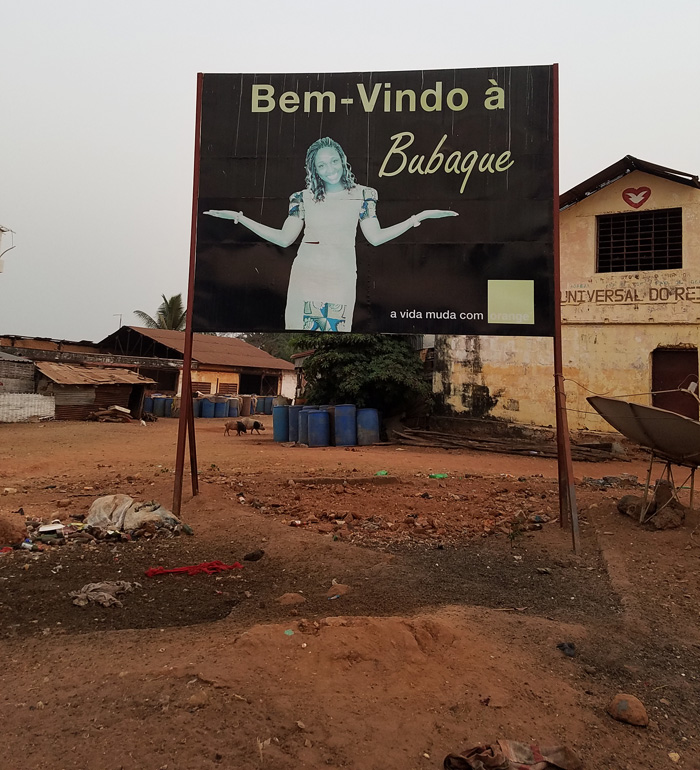
Accommodation
If you are trying to push the boat out for your honeymoon, Ponta Anchaca on Rubane is the ticket.
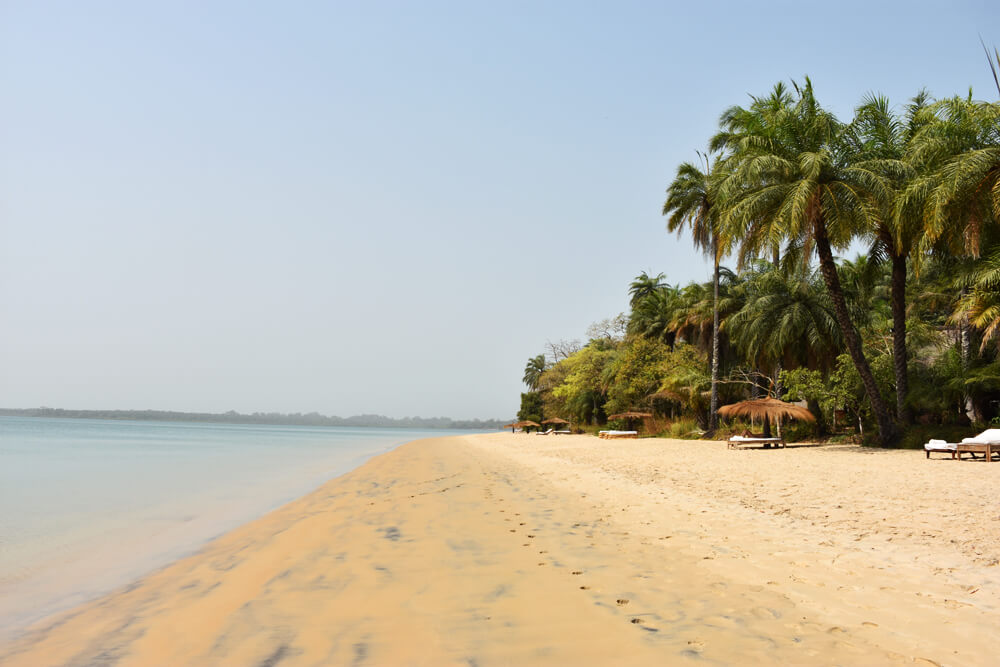
For everyone else, here are a few suggestions on the island of Bubaque:
Lodge les Dauphins
This is where we often stay on our two week trips from Dakar to Bissau. The rooms are clean and comfortable, the food is excellent and the staff and service are outstanding. We really can’t say enough about Eric, Nando, Mr. Dos and the rest of the team.
A few other notes about Les Dauphins. There is 24/7 electricity. The hotel has solar power and two generators. There is not a beach for swimming, but there is one nearby and the lodge has a well maintained swimming pool.
The lodge is principally frequented by fishermen, and if you want to organize an excursion Eric and his team can easily arrange this. They can also help you organize day trips to Rubane and Canhabaque.
At Dauphins, you can expect to pay 47,000 CFA (2022-2023 prices) for full room and board for a single room.
Cajou Lodge
For a more upscale option on Bubaque, we recommend Cajou Lodge. Only opened in 2023, the lodge is perched above the channel between Bubaque and Rubane. The property is thoughtfully designed from the entrance down to the stairs that are built into the cliffs. The rooms, while not exceptionally large, are luxurious. There is an excellent restaurant and bar, and there is a small swimming pool.
You can expect to pay 120,000 CFA (193 euro) per night for full room and board. They do have a 25% discount from Sunday evening to Thursday evening.
You can contact the Cajou Lodge on whatsapp at +245 966333329.
If you are more of a budget oriented traveler, all is not lost:
Mango Lodge
Same ownership as Cajou Lodge. No frills and quite basic, but also one of the most affordable options on the island. It’s also a nexus of the social scene, with frequent concerts, dance performances and parties.
You can get a room here for 20,000 CFA (32 euro) that includes breakfast. As with Cajou Lodge, there is a discount from Sunday to Thursday. With Mango, you can expect to get 20% off.
Check out their Facebook page to get in touch with them.
Saldo Mar
Frequented by travelers for the budget accommodation as well as the often excellent home-cooking on offer by Spanish owner Melchor, Saldo Mar has been a fixture on the north coast of Bubaque for many years now.
While we have eaten our fair share of fantastic meals here, we won’t be running back there anytime soon. The owner is at times charming and affable, but he can also be downright rude and hostile.
Dining reservations need to be made in advance at Mel’s, a fact that is completely understandable given the logistics of buying and storing food on the island. After being informed that the restaurant was closed, we made plans to eat elsewhere. Mel then phoned us and said he would open the restaurant especially for us. Pleasantly surprised, we were equally shocked when we arrived and he chased us away.
There are rooms from 20,000 CFA (32 euro) and the food is excellent. Outside of this one incident, we have had great experiences with Mel.

Photo taken by our friend Matt Schinske
Best Beaches in the Bijagos
Most of the island coastlines are undeveloped and untouched. Mangroves, rocky terrain and tide changes keep many of the beaches off limits. But there are plenty of sand beaches that are great for relaxing and swimming.
Before pointing you towards a few of these beaches, it’s important to note the tide times. When it is low tide, the water recedes for a considerable distance and the sand flats turn into a gloopy mess. All of the beaches below are better enjoyed at high tide. You can google “tide times Bubaque” or “tide times Bijagos” to see when high tide occurs. You can also download “tide times” apps for your smartphone. We use Tide Times for android.
Bubaque’s hidden beach
This is your classic horseshoe bay of pure beach magic. It’s easily accessible with walking paths from Bijante. Make sure to greet the Bijante villagers when you arrive and explain that you are going to the beach (the “praia”). And make sure to visit at hight tide!
Bruce Beach
Arguably the best beach on the island and certainly the most expansive, Bruce Beach is an 18 km ride on a bush track to the other side of the island. Getting there is half the fun (we recommend renting bicycles from Cajou Lodge or Casa Afrikana).
This beach is up there with the best in West Africa and is a great day trip.
There are two hotels on Bruce Beach. We gravitate towards the Dakosta Eco Retreat, owned by Bissau-Guinean-American champion kickboxer Adelino Da Costa. He wisely purchased a plot of land situated on untouched beach, where you can catch both the sunrise and the sunset.
The on-site bar serves beer, palm-wine and a number of cocktails. The food is on the expensive side, but you get to dine at a table made out of a dugout canoe whilst staring at the ocean.
*UPDATE February 2024* The rainy season of 2023 was not kind to Dakosta Eco Retreat. Da Costa was forced to scrap most of his infrastructure at the end of the beach and has now moved slightly down the beach towards Wefa Natura. We still had a great experience here, but it may take him some time to get things back to where they were. If you are planning on heading out there, be sure to get in touch well in advance to make sure they are open and that there is staff on site. They can be reached on whatsapp at +351 935 868 671.
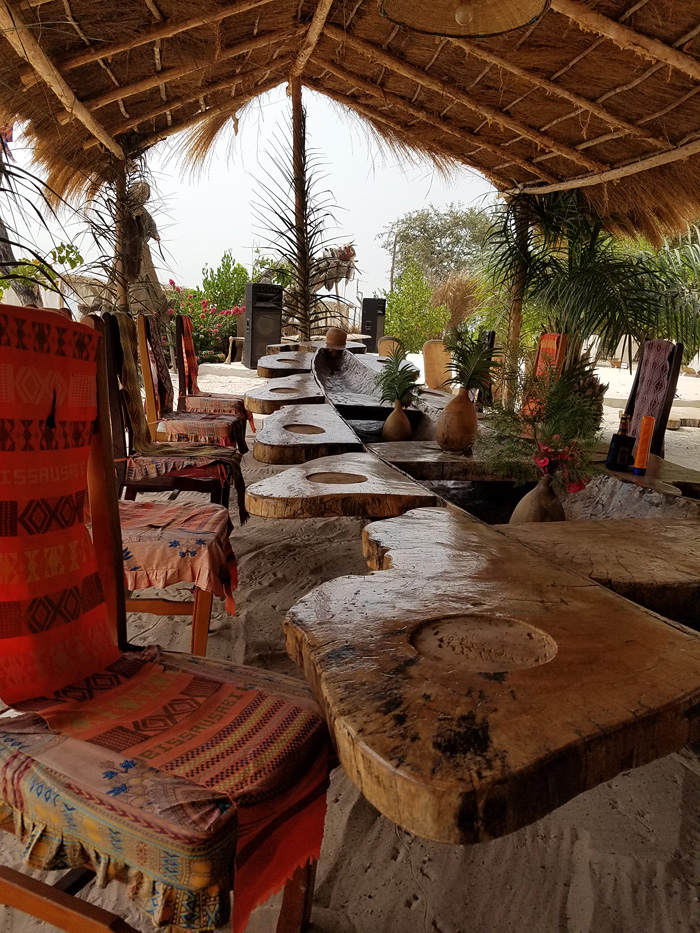
The beach is the main attraction. It’s all white sand and crystal clear water. Do watch out for stingrays, though! It’s a good idea to shuffle your feet when entering the water. This will help ensure you don’t step on a ray, and the vibrations produced will help scare them away.
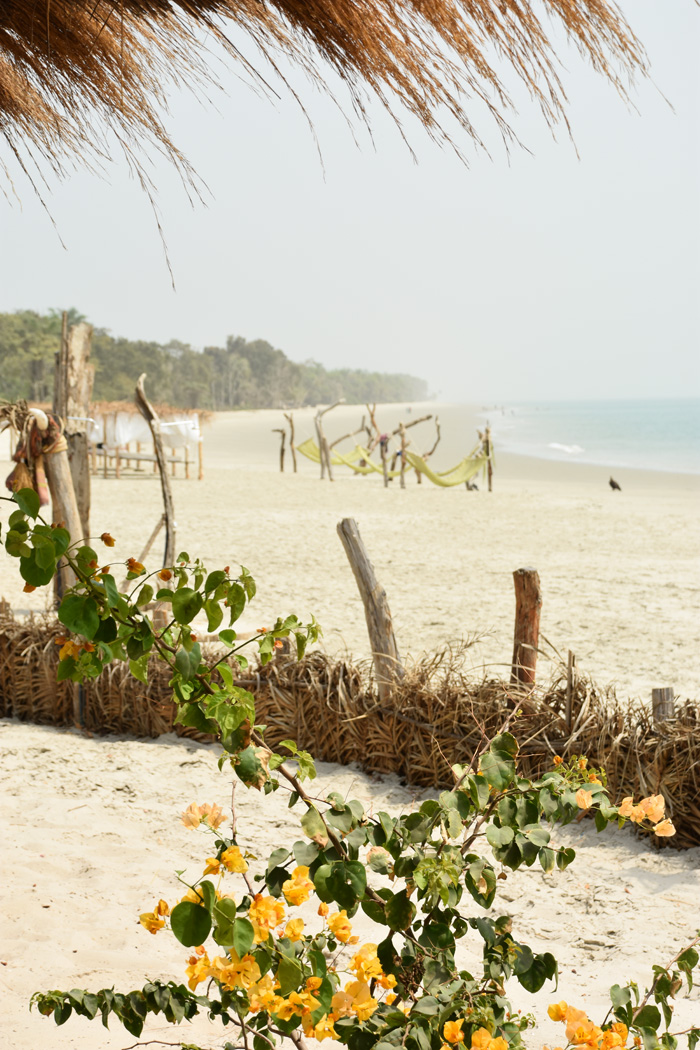
Once again, high tide is when you can enjoy this beach.
In addition to the beach, Dakosta has wellness retreats, kickboxing sessions, dance parties and local cultural performances. They also offer lodging, from glamping style tents to bungalows. Get in touch with them at dakostaecoretreat@gmail.com or on whatsapp at +351 935 868 671.
Angurman
This is our recommendation for a beach if you want to get off of Bubaque. It is close by and a very manageable transfer to arrange with most Bubaque hotels (or anyone that has a boat). If you get your tides right – go at high tide! – it is one of the more dramatic island arrivals on offer in the archipelago.
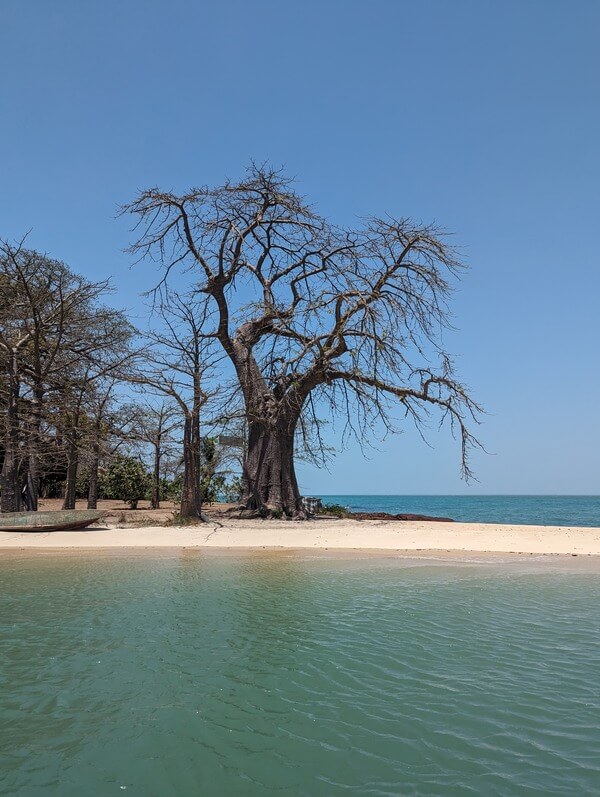
The Italian restaurant on site and fully stocked bar doesn’t hurt. And they have lodging! I suppose you would call it glamping. The whatsapp is +245 955 949 714 for all reservations and info (reservations are needed even if you are just planning on popping over for lunch).
Ponta Anchaca
We mentioned Ponta Anchaca as a honeymoon destination. It’s also possible to spend a half day there, eating lunch and enjoying their beach and swimming pool. The lunch is typically a three course meal and it will run you about 15000 CFA, a steep price but they will also taxi you to and from Bubaque as part of the price if you have a small group together.
They have several kilometers of beach to be enjoyed at high tide. If the tide’s out, hop in the infinity pool that looks out towards the island of Canhabaque.
Canhabaque
One of the larger islands in the archipelago and it has exactly zero beachside developments. There is no port. There are no hotels or resorts. Just miles of white sand beach.
Unless you are doing a homestay in one of the villages, it’s unlikely that you are staying overnight on Canhabaque. But day trips can easily be organized from Bubaque and Rubane. Once again, heed our advice on the tides!
Activities, Things to Do and Day Trips
For the non-Portuguese speakers an English or French speaking guide can come in handy. We recommend connecting with Mimi at Cajou Lodge or Mango Lodge (she owns both properties). She speaks French and English and is very knowledgeable about Bubaque and the nearby islands.
Fishing – far and away the reason why the majority of visitors come to the Bijagos Islands. The industrial trawlers that extract everything from the sea from Mauritania on down, are not allowed to patrol the waters of the Bijagos. Nor could they. The tide changes, sand bars and currents are not very accommodating to large ships. This has been a boon to artisanal fishermen and it has helped lure sport fishermen from around the world.
Whether you are a novice or a professional you can have an excellent fishing excursion in the Bijagos. We suggest organizing with one of the following outfits, Lodge les Dauphins, Casa Afrikana or Bobs Fishing Club on Rubane.
Surprisingly there is not a proliferation of diving outfits on the Bijagos Islands. Most of the waters are pelagic and there is not much in the way of reefs. There are also plenty of sharks!
Party time – from Thursday thru till Sunday you can show off your dancing skills whilst rubbing shoulders with the local party people at Discothèque Online. It starts late and finishes when the last person leaves.
There are also cultural performances and parties at Cajou and Mango Lodges. You can pop into Mango and chat with Mimi to see what’s coming up. Most events will take place between Thursday and Sunday.
Biking and Kayaking – you can hire kayaks from Bobs on Rubane for 20 euros an hour. Even if you are not staying on Rubane, or at Bobs specifically, you can arrange for a transfer from most hotels on Bubaque.
Bikes can be hired from a few places on Bubaque for about 5000 CFA per day. While the bikes can be in questionable shape, you can have a ball riding around the island. The newest and most well-maintained bikes can be found at Cajou Lodge and Casa Afrikana.
Cycling to Bruce Beach is a great way to spend a day on Bubaque. Be sure to spread the greetings far and wide when you are entering villages. We enjoyed several pit stops for palm wine and cana, the local firewater.
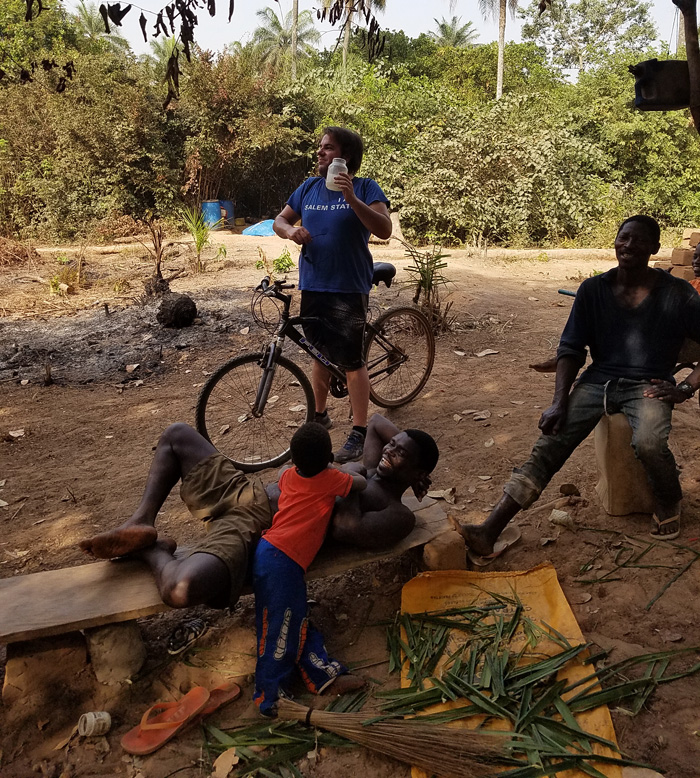
Photo taken by Matt Schinske
Wildlife – the salt water hippos on Orango raise the most eyebrows, but the islands are also renowned for their incredible birdlife. It’s also possible to witness turtle hatchings. Most of the hotels on Bubaque can help you arrange these excursions, including transfers to Orango.
Orango is the largest of the Bijagos and also the most inaccessible in terms of distance. It is also home to some of the most interesting wildlife. There is one lodge on Orango and it is directly affiliated with the national park (the entire island is protected). In order to book your stay there, you can contact info@orangohotel.com. They can arrange boat transfers from Bissau and Quinhamel. Expect to pay around 130 euro per day for full room and board on Orango. The park entrance fee is 5000 cfa per day and you can expect some additional guiding fees. The hotel also offers itineraries of varying lengths.
Day trip to Canhabaque – we mentioned the beaches on Canhabaque, but the true draw here is a cultural one. There are 20 villages on the island connected by jungle paths. The villages offer a window into Bijagos culture that is hard to find anywhere else. It is imperative to go with a guide, both to understand local cultural practices and to have access to the villages. We recommend talking with Mimi at Cajou or Mango Lodge.
Traditional Bijagos culture is matriarchal and sharply oriented towards conservation of the natural environment. Women choose their husbands and the men have little right of refusal. Priestesses administer ceremonies in forest settings where the rest of the population dare not tread. While missionaries and frequent contact with the mainland and the urban center of Bissau are changing things, many of the foundational cultural practices of the Bijagos ethnic group can be observed on Canhabaque.
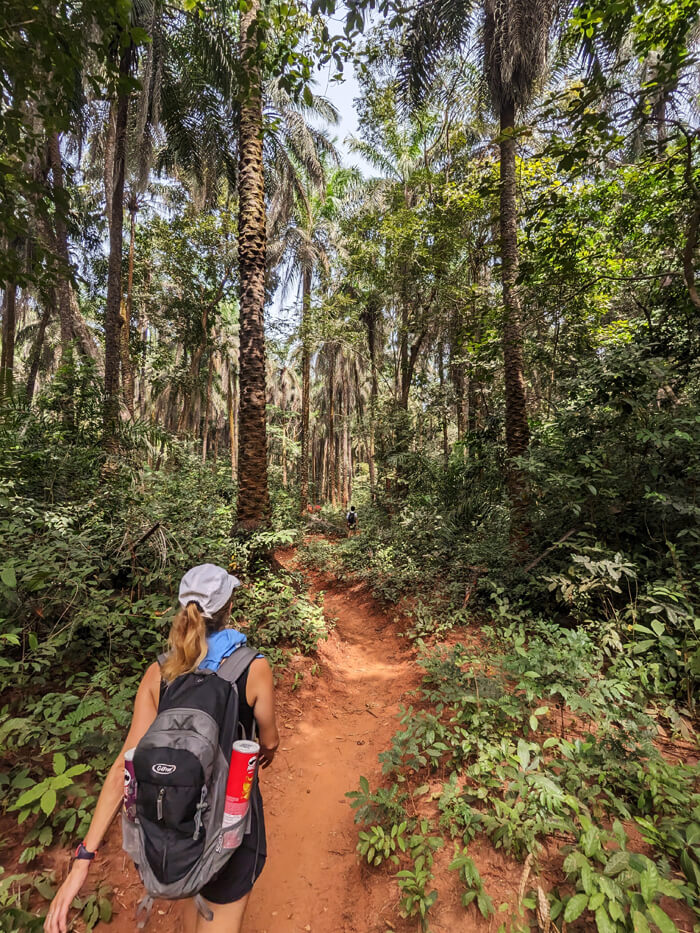
Shopping – most of the commerce on the island of Bubaque happens around the port. You can safely say that if you don’t find what you are looking for around this area then you probably won’t find it in the archipelago. Be aware that none of the shops are aiming at the tourist market so if the locals aren’t going to buy it then you won’t find it in the shops.
The biggest supermarket on the island is the Mauritanian run Super Mercado Agoueinitt. It’s 100m up the main road from the port on the right hand side.
Eating and Drinking
Bubaque is the only island where there is a variety of dining options. Most of the hotels have restaurants, but it’s important to make reservations and it’s often a good idea to choose your meals in advance.
If drinking a cold beer and watching life go by is your thing then there are several nice locally run bars around the port. Restaurant Djass overlooks the port and is a nice spot to watch the locals catching fish off the jetty whilst drinking a cold Super Bock.
Restaurant Nuna is hidden behind the first row of shops as you leave the port. It’s excellent with very good food and cold beers. A whole fish, rice and salad costs 1500 CFA and a large Super Bock is 750 CFA.
Other Things to Know
- Weather conditions can effect your arrival and departure. Boats will not run when the seas are exceptionally rough. Keep this in mind when planning your trip. In general, we would recommend avoiding the rainy season. Weather conditions can often prevent crossings at this time, and many of the hotels are actually shut down.
- Cell Networks – both MTN and Orange are available on the islands. The locals say that MTN is the more reliable of the two, but we had no issues with Orange during our stay on Bubaque, both for internet and for making calls.
- Know where you are going and respect local cultural practices – this is important wherever you go in the world, but it deserves a particular spotlight on the Bijagos. There are some areas where only priestesses are allowed to step foot. Trespassing would be a serious violation and we don’t want to imagine the consequences. Greet people wherever you go and always ask for permission and guidance if you are going off piste.
If you’ve been to Bubaque, feel free to share your tips in the comments below. We had a great time on this island, and would love to hear about anything we may have missed as we are planning to be back there soon.
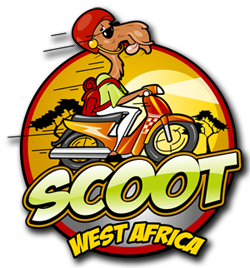
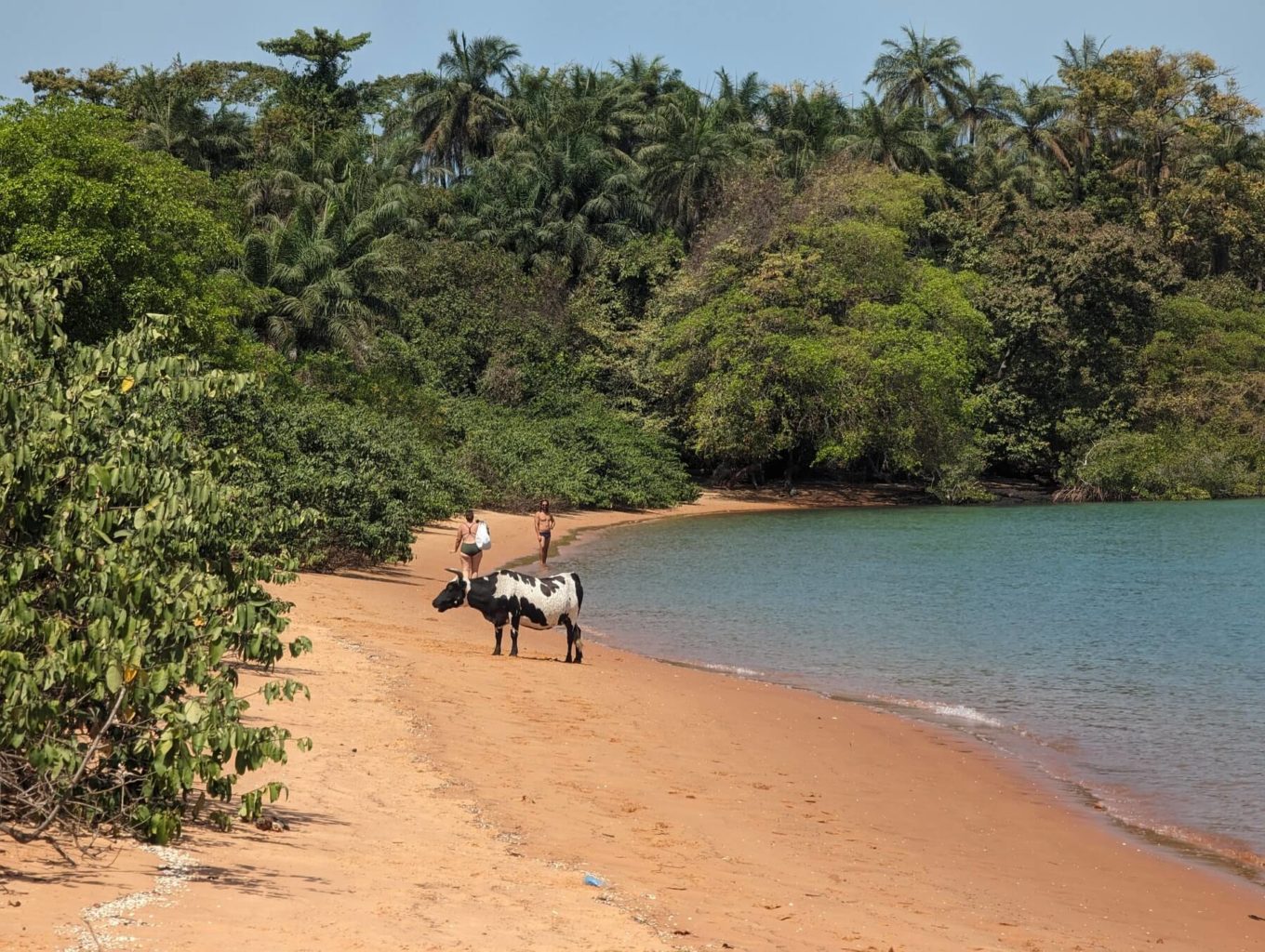
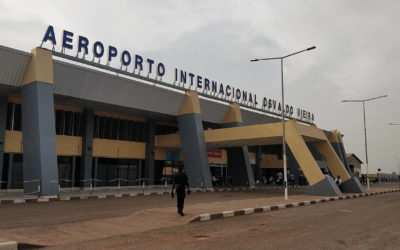
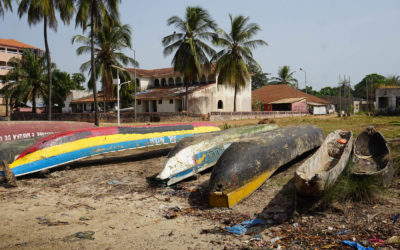
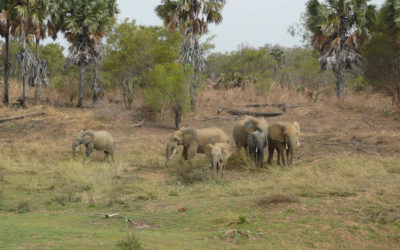
0 Comments